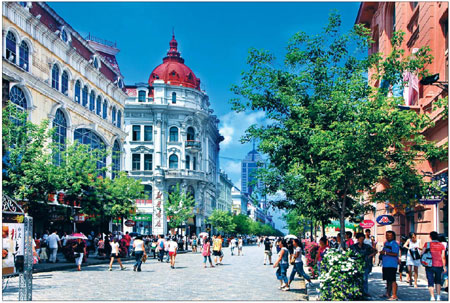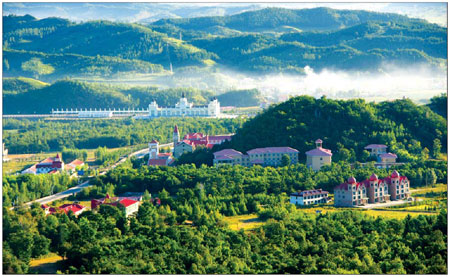News
Improved services, facilities to boost tourism
By Xue Fei (China Daily)
Updated: 2011-06-01 10:56
 |
Large Medium Small |
|
Harbin's famed Zhongyong pedestrian street is lined with Russian-style buildings that evoke its international history. Liu Daxin / for China Daily |
|
Popular winter resort Yabuli also offers a retreat from the heat of summer. Zhao Tianhua / for China Daily |
Authorities in Northeast China's Heilongjiang province are looking to increased tourism to boost economic growth and have their sights set on 12 major resorts.
A number of new facilities were built at the resorts beginning last year, with 2.1 billion yuan ($321.7 million) invested overall.
"To attract more tourists and get them to stay, we have to improve services and facilities at the sites," said Ji Bingxuan, Party chief of the province.
"Last year was just the beginning, but we've already done a lot. We chose these 12 because they represent the province's best - winter attractions, vast forests, a place where people can escape the summer heat and city life - and the large rivers and lakes on the border between China and Russia," Ji added.
One example is Beijicun, the northernmost village in the country, nicknamed "China's North Pole". Russia is just across the Heilong River.
The village's major attractions are the snow and ice in winter and tours in summer, when the sun shines about 20 hours a day.
Another tourist site in the north of the province, Wudalianchi, which has a series of volcanic lakes with mineral springs, is both a health resort and a site for scientific research.
The local government plans to turn it into a "volcano museum" by integrating entertainment with education.
Other lake zones set for development are Jingbo, Xingkai, and Lianhua, all surrounded by mountains and distinct local cultures.
Water activities, the woods and rural life are the major attractions. Authorities say after the infrastructure is improved, the sites will become business and trade zones.
An already-popular tourist attraction is Yabuli Ski Resort in southern Heilongjiang, the largest ski area in China and the venue for the third Asian Winter Games in January 2007, which is also on the improvement blueprint.
New infrastructure for tourism sites include roads, parking lots, restaurants and shopping facilities, on which the province already spent about 860 million yuan last year.
This year, the focus is on local cuisine and developing culinary attractions that combine "culture, health and pleasure - and making sure every dish has a story behind it", according to the Heilongjiang tourism bureau.
Russian food and local ethnic dishes are highlighted.
The government's plans even include better public lavatories. It has set higher standards for hygiene, eco-friendliness, and size and shape.
It has already built some state-of-the-art bathrooms at major tourist sites that use biotechnology to break down the waste and produce marsh gas at the same time.
To promote the province all across the nation, the government has established closer ties with media groups such as the Xinhua News Agency, China Central Television, People's Daily, Hong Kong's Economic Times and Wen Wei Po, and sina.com.
According to the provincial tourism bureau, Heilongjiang received 159 million tourists last year, up 44.5 percent from 2009.
Its tourism revenue totaled 88.3 billion yuan, growing 35.9 percent from the previous year. The proportion of tourism revenue in Heilongjiang's gross domestic product rose to 8.63 percent in 2010 from 5.09 percent in 2005.
(China Daily 06/01/2011 page30)
| 分享按钮 |

